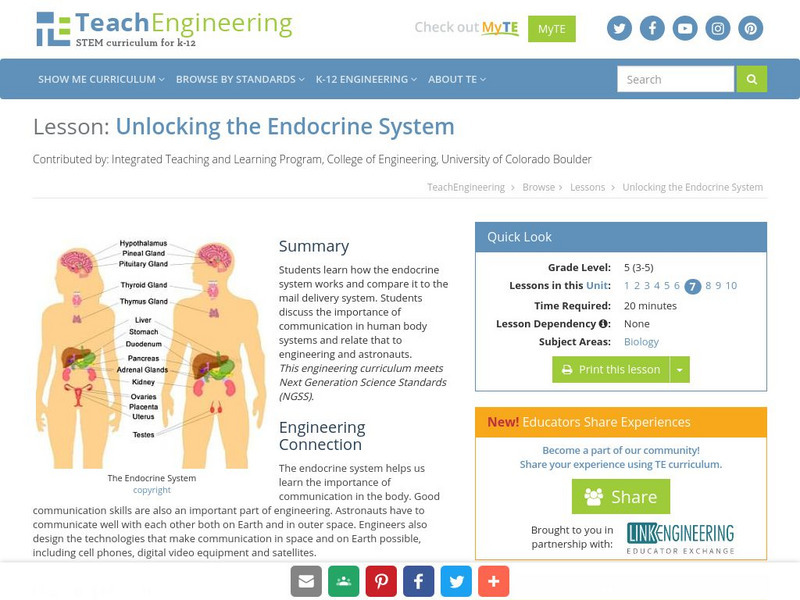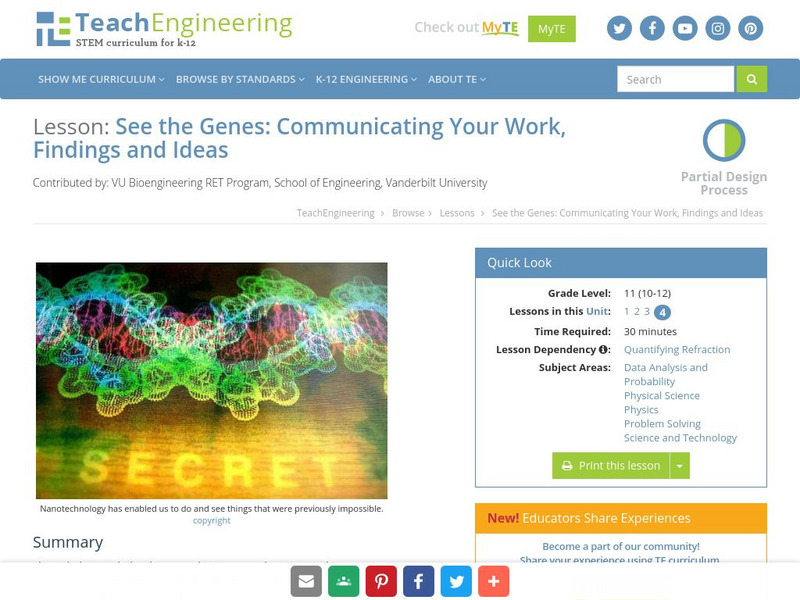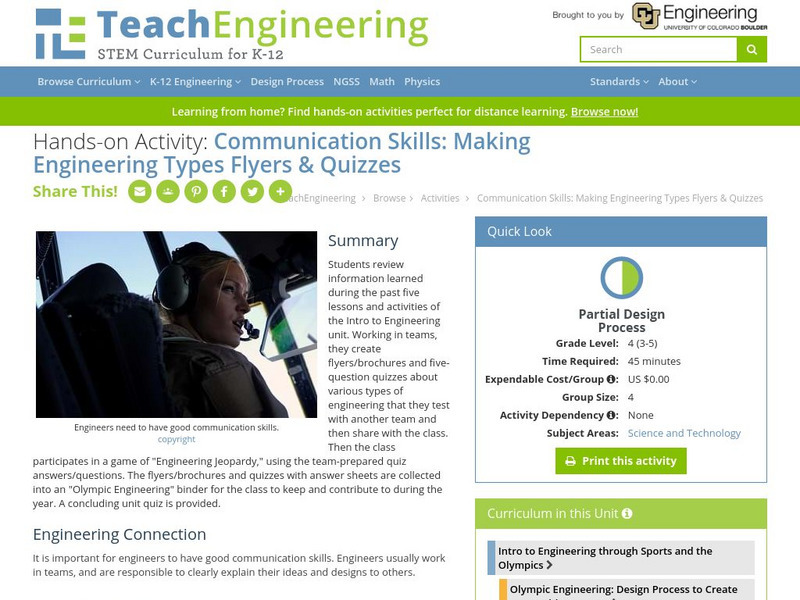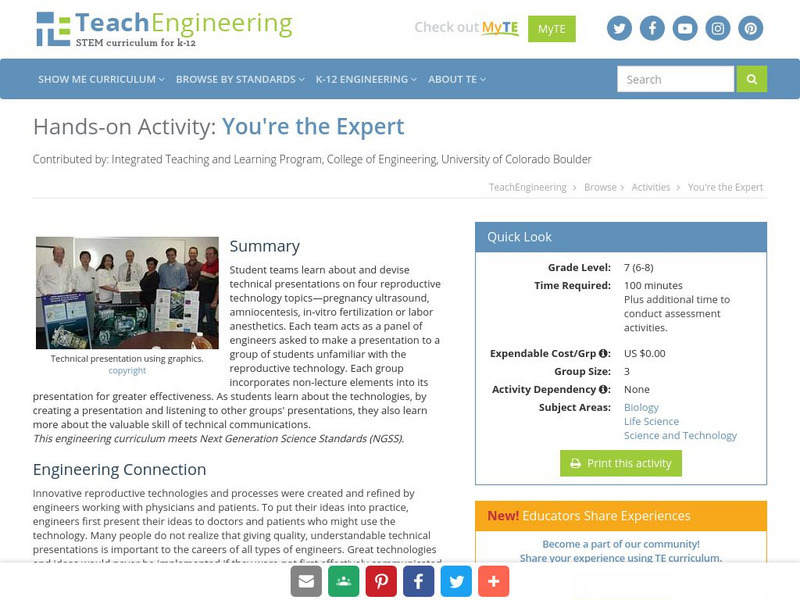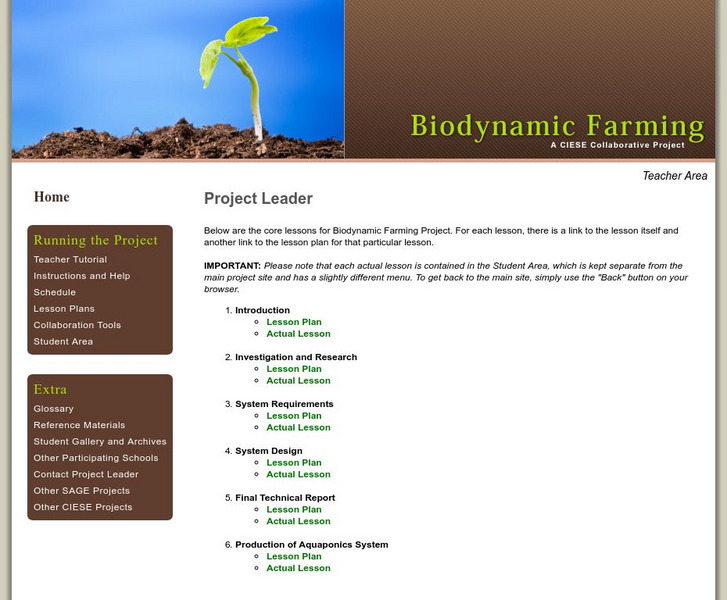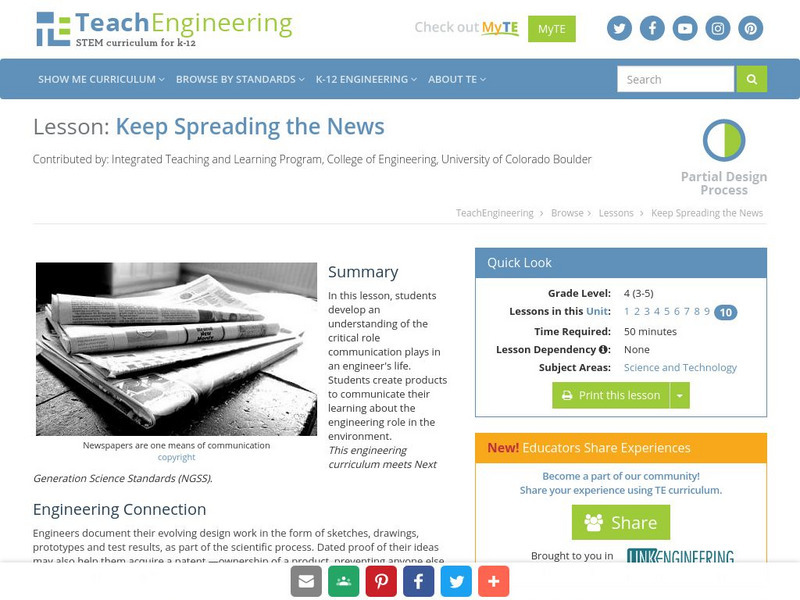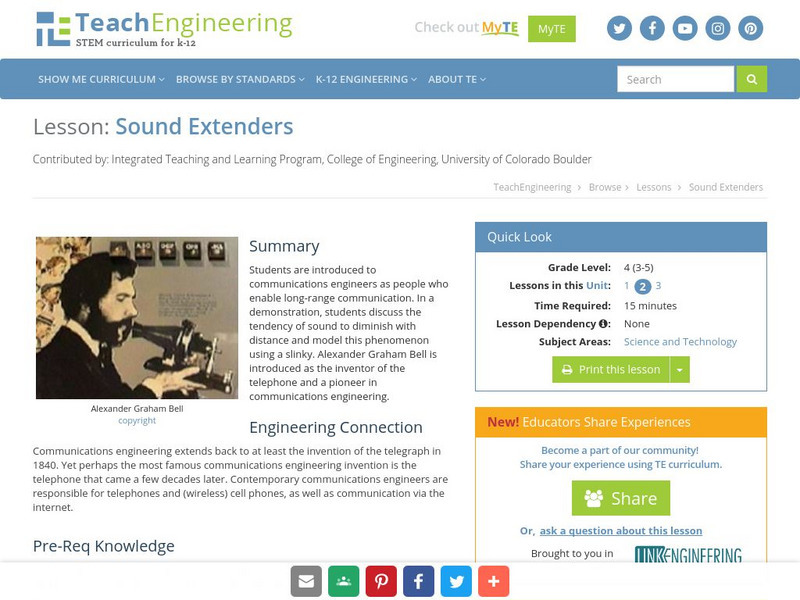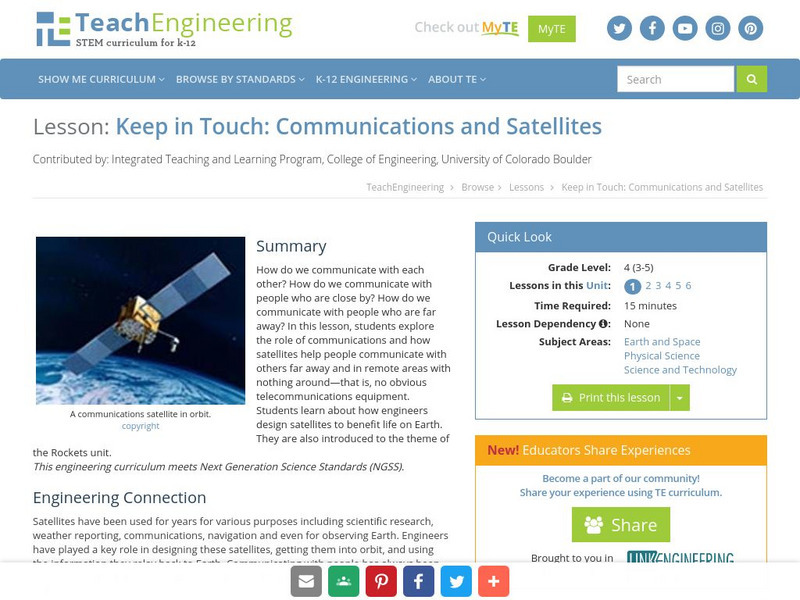Hi, what do you want to do?
TeachEngineering
Teach Engineering: Write On!
In this activity, students create a book, newspaper or other published work to communicate what they have learned about engineering and the environment.
TeachEngineering
Teach Engineering: Unlocking the Endocrine System
Students learn how the endocrine system works and compare it to the mail delivery system. Students discuss the importance of communication in human body systems and relate that to engineering and astronauts.
TeachEngineering
Teach Engineering: Swinging on a String
Learners explore how pendulums work and why they are useful in everyday applications. In a hands-on activity, they experiment with string length, pendulum weight and angle of release. In an associated literacy activity, students explore...
TeachEngineering
Teach Engineering: See the Genes
Through this concluding activity and its associated activity, young scholars experience one valuable and often overlooked skill of successful scientists and engineers- communicating work and ideas. Students create posters depicting their...
TeachEngineering
Teach Engineering: Hello, Are You Listening?
Students gain a basic understanding of the engineering components behind telecommunications, in particular, the way telephone communication works to link one phone to another for conventional landline and cellular telephones. During this...
TeachEngineering
Teach Engineering: Eye Witness Reporting
In this activity, the students will develop a briefing for a T.V. evening news program that summarizes their experiences surviving in the Amazon rainforest. The students will have the opportunity to role play as interviewer and...
TeachEngineering
Teach Engineering: The Universal Language of Engineering Drawings
Students practice the ability to produce clear, complete, accurate and detailed design drawings through an engineering design challenge. Using only the specified materials, teams are challenged to draw a design for a wind-powered car....
TeachEngineering
Teach Engineering: For Those Back Home
Students review information learned during the past five lessons and activities of the Introduction to Engineering unit. Working in teams, they create flyers and short quizzes about various types of engineering to share with the class...
TeachEngineering
Teach Engineering: Smart Move!
This is a simple activity to visualize a communication system. In order to do this the students encode, decode, transmit, receive, and store messages. They will use a code sheet and flashlight for this process. They will also maintain a...
TeachEngineering
Teach Engineering: You're the Expert
Student teams learn about and devise technical presentations on four reproductive technology topics pregnancy ultrasound, amniocentesis, in-vitro fertilization or labor anesthetics. Each team acts as a panel of engineers asked to make a...
TeachEngineering
Teach Engineering: Drawing Designs in Detail
Students practice creating rudimentary detail drawings. They learn how engineers communicate the technical information about their designs using the basic components of detail drawings. They practice creating their own drawings of a...
TeachEngineering
Teach Engineering: The Evening News
In this lesson, the students will summarize their experiences in the Amazon rainforest by developing and presenting a briefing for a T.V. evening news program.
TeachEngineering
Teach Engineering: Hydraulic Arm Challenge
Students will design and build a mechanical arm that lifts and moves an empty 12-ounce soda can using hydraulics for power. Small design teams (1-2 students) will design and build a single axis for use in the completed mechanical arm....
Other
Stc: The Society for Technical Communication
This site is dedicated to The Society for Technical Communication. Its membership includes writers, editors, illustrators, printers, publishers, educators, students, engineers, and scientists. You'll find resource materials, databases,...
Read Works
Read Works: Using Cellphones and Computers to Transmit Information
[Free Registration/Login Required] An informational text about changes in communication after computers and cell phones. A question sheet is available to help students build skills in reading comprehension.
Center for Innovation in Engineering and Science Education, Stevens Institute of Technology
Ciese: Biodynamic Farming
During this module students learn about biodynamic farming through hands-on activities that culminate in having multiple schools collaborate to design subsystems that are combined to make a working aquaponic system. During the SAGE...
PBS
Pbs Learning Media: American Masters Collection: Hedy Lamarr
Major support for Bombshell: The Hedy Lamarr Story provided by the Alfred P. Sloan Foundation. This is a collection of four video lessons about Hedy Lamarr including her acting career and her inventions. Teaching materials are included.
TeachEngineering
Teach Engineering: Keep Spreading the News
In this instructional activity, students develop an understanding of the critical role communication plays in an engineer's life. Students create products to communicate their learning about the engineering role in the environment.
Other
National Engineers Week Foundation: Hearing the Light
Students learn how laser communication systems are built by observing how sound can be encoded into, and transmitted by a light beam.
TeachEngineering
Teach Engineering: Sound Extenders
In this lesson, students are introduced to communications engineers as people who enable long-range communication. In the lesson demonstration, students discuss the tendency of sound to diminish with distance and model this phenomenon...
TeachEngineering
Teach Engineering: Keep in Touch: Communications and Satellites
How do we communicate with each other? How do we communicate with people who are close by? How do we communicate with people who are far away? In this lesson, students will explore the role of communications and how satellites help...
TeachEngineering
Teach Engineering: Endocrine Excitement!
In this activity, students are divided into a group of hormones and a group of receptors. The hormones have to find their matching receptors, and the pair, once matched, perform a given action. This activity helps students learn about...
TeachEngineering
Teach Engineering: Sound
Students learn the connections between the science of sound waves and engineering design for sound environments. Through three lessons, students come to better understand sound waves, including how they change with distance, travel...
TeachEngineering
Teach Engineering: Pingus Penguins: Writing Good Instructions
Students use the free computer game Pingus to learn how engineers, specifically environmental engineers, use their technical writing skills to give instructions and follow the instructions of others. Students learn to write instructions...






